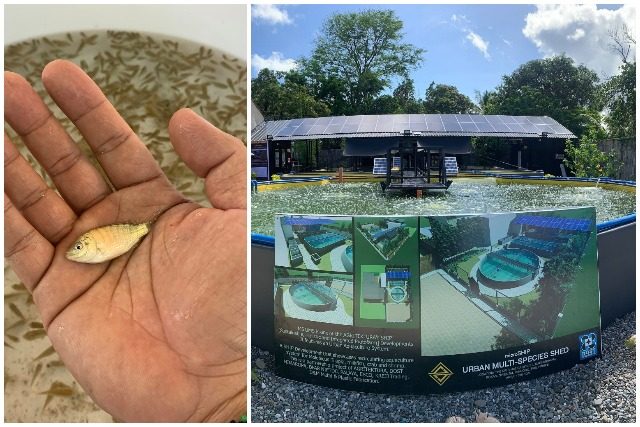A solar-powered tilapia and milkfish hatchery was launched in Oriental Mindoro, which was the first in the region, according to the Department of Science and Technology.
Launched on March 3, DOST Secretary Fortunato de la Peña stated that the smart facility is composed of a hatchery, grow-out ponds and a 10-meter diameter circular pond.
It is also located in the agricultural town of Roxas in Oriental Mindoro.
“It has a full capacity of 1,500 breeders that can produce 500 fingerlings per breeder per month, while the grow-out ponds have the capacity of 13,000 fingerlings. The circular pond, on the other hand, can accommodate 100,000 white shrimp fry per rearing season,” De la Peña said.
Moreover, it is fully operated through solar power that helps reduce monthly electrical expenses by as much as P25,000.
The person behind the project was a resident of the town named, Architect Francis Neil B. Quijano and a local business Agritektura Enterprises, according to De la Peña’s report.
Agritektura stands for “Agrikultura, Arkitektura, Teknolohiya, Edukasyon, Kalikasan, Kalusugan, Kasaysayan, Komersyo, Komunidad, Komunikasyon, Turismo at Kultura.”
“Driven by the country’s need for more sustainable food ecosystems, Quijano ventured into reviving the aquaculture industry in the province by integrating science and technology (S&T)-based solutions. This led them to partner with DOST-MIMAROPA and acquire a solar-powered hatchery that can be used for the grow-out and production of high-quality fingerlings of Tilapia and Milkfish and sustain the facility’s Recirculating Aquaculture System (RAS),” De la Peña said.
The entire project was funded by DOST-MIMAROPA (Marinduque, Occidental Mindoro, Oriental Mindoro, Romblon, and Palawan) through its Small Enterprise Technology Upgrading Program (SETUP).
Smart aquaculture
De la Peña said the project is part of DOST-MIMAROPA’s goal to boost aquaculture in the region.
“Through this project, DOST-MIMAROPA aims to promote smart aquaculture to encourage the industry to adopt smart technologies and processes to increase productivity and competitiveness,” he said.
DOST-Oriental Mindoro Provincial S&T Director Jesse M. Pine also added that they had been eyeing aquaculture for the past three year as the solution for food and nutritional security.
“Aquatic animals such as farmed shrimp and fish have a lower feed conversion ratio (1.0-2.4) compared to beef (6.0-10.00), pigs (2.7-5.0), and chicken (1.7-2.0) due to their buoyant and cold-blooded characteristics. The lower the FCR value, the higher its efficiency,” said De la Peña.
“Through the adoption of new S&T solutions, the productivity of aquatic resources in the province is expected to increase over time,” he added.
How it works
The structure employs RAS or recirculating aquaculture system, an adopted farming technique that “allows the rearing of fish in urban areas or any structure with high densities such as tanks with a ‘controlled’ environment.”
“The system incorporates a recirculating systems filter and cleans the water for recycling back through fish culture tanks,” explained De la Peña in his report.
The system effectively reduces water and space requirements and allows for weather and predator protection, making it better than conventional aquaculture systems.
It also des not leak and the discharge of waste it controlled, it added.










